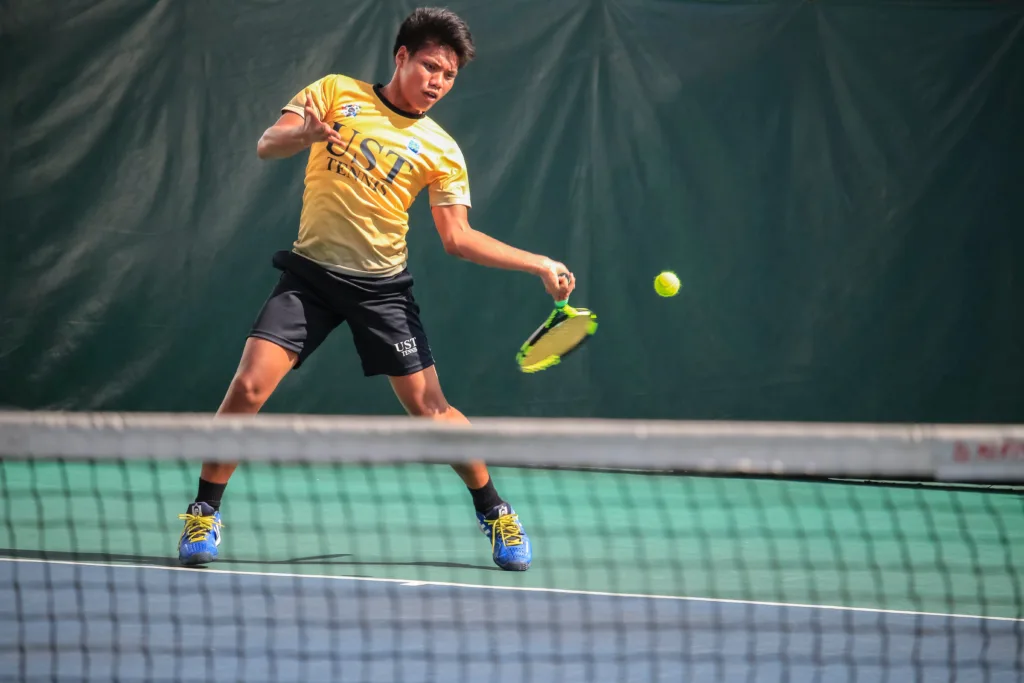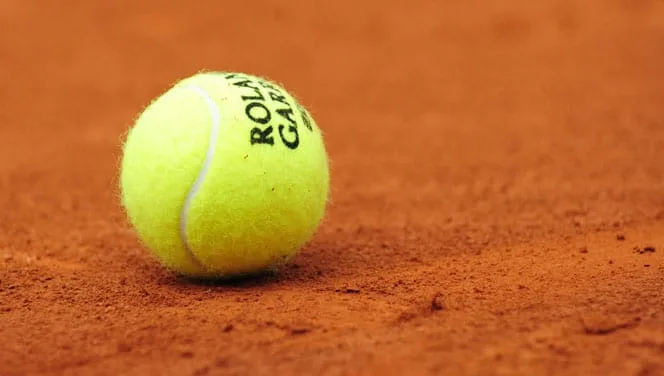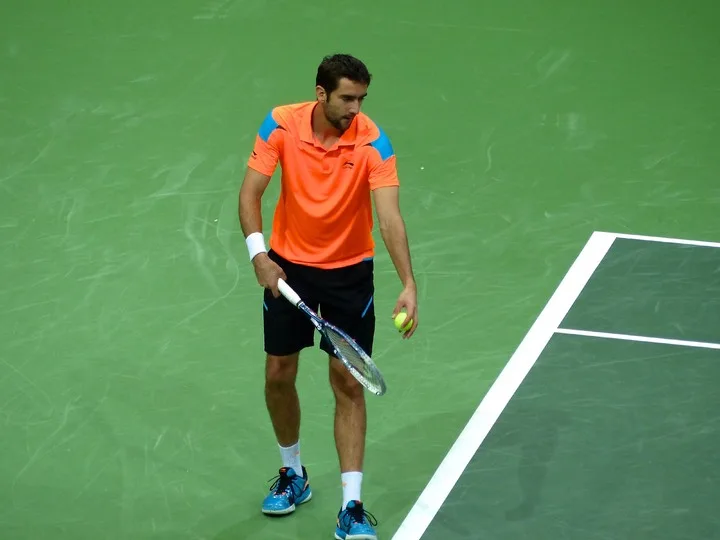Tie Break Tennis: a fully comprehensive guide + 5 elite players strategies

From now on, you will no longer be bothered by unwanted calls or arguments regarding tie break tennis, regardless of your role as a player or spectator.
This article will provide a complete explanation of all the rules governing this crucial game. Plus, we will provide a comprehensive guide on strategies for success in tie-break tennis.
Tie Breaker Tennis rules:
The tiebreak is a specific match situation designed to determine the winner of a set which becomes tied at 6-6 games each.
At 5-5 games each, the set cannot be won until a player has won by two clear games, meaning the set would have to be won at 7 games to 5.
However, if the game becomes tied at 6 games each, we enter a tiebreak, a game of 7 points with a two point lead. Note that points in a tie break are scored simply as “1, 2, 3”.
We also name this tie break tennis: “12 points tie break”, because it is the best of 12 points won by two (7-5). But if any of the players couldn’t win by a margin of two points, the tie break will expand to more than 12 points in total.
How does Tie Break work in tennis ?
The tiebreak ends when a player reaches 7 points with a two point lead. If it’s 6 all, one player should win two points consecutively to seal the set.
Tennis Tie Break Serving system
During a tiebreaker, player 1 will serve once from the right side of the court, also known as the ‘deuce’ side.
The serve then switches to player 2 who starts on the left “ad” side of the court and serves twice, once from each side.
Player 1 then serves twice starting from the ad court. Both players will change ends every 6 points.
Player 2 starts serving in the next set as the tiebreak was started by player 1.
For more information about serving and receiving order for singles and doubles, check this article: tennis serving rules. Under the section of tie-break.
Tie Break tennis exception: “Super Tie Break”
A “Super Tie Break”, also known as a “10 points tie break” or “Match tie break,” is a shortened and decisive form of tie break used in tennis to determine the winner of a SET or a MATCH that ends in a tie (usually 6 games to 6 / or 1 set to 1).
What are the “Super Tie Break tennis” rules?
Unlike a regular tennis tie break which typically ends at 7 points with a margin of 2, a super tie break is played to a higher total of 10 points, with a margin of 2 to win.
It is commonly employed in doubles matches, mixed double matches, some lower-level tournaments, and exhibition matches as a quicker alternative to a full match, providing an exciting and fast-paced conclusion to matches.
Where and when the “Super Tie Break tennis” is used?
So this is relative to tournament rules if they apply the Super tie break or play with the regular tie break tennis.
Understanding these rules is crucial, as it sets the stage for the strategies we’ll discuss next.
When the Tie Break Tennis was first used?
Jimmy Van Alen, a tennis innovator and promoter, introduced the tiebreak system to tennis in 1970 as a solution to address the prolonged and sometimes inconclusive nature of matches, particularly in doubles competitions.
Van Alen’s tiebreak system aimed to streamline matches and add excitement for both players and spectators. His tiebreak format, initially named the “Van Alen Streamlined Scoring System” as “VASSS” proposed a decisive way to conclude sets that ended in a tie.
In Van Alen’s tiebreak system, the first player or team to reach five points, with at least a two-point advantage, would win the tiebreak and the set.
Van Alen first implemented his tiebreak system at the 1970 United States Lawn Tennis Association (USLTA) Boys’ 18 and Under Championships held at Newport Casino in Rhode Island.
The tiebreak system received positive feedback from players, coaches, and spectators alike for its ability to add drama and expedite matches.
Following the success of the tiebreak system’s trial run, it gained popularity and was eventually adopted by various tennis organizations and tournaments worldwide, including Grand Slam events.
When did the Tie Breaker in tennis was first implemented in the grand slam?

The tiebreak system was incorporated in Majors, to introduce a fair and efficient way of resolving tied sets.
Historically, prior to the introduction of tie breaks, sets could potentially extend indefinitely until one player secured a two-game advantage.
The implementation of tiebreaks in Majors occurred progressively:
1.Wimbledon: Wimbledon was the last of the four Majors to adopt the tiebreak system. It introduced the tiebreak for the first time in 1971 in all sets except the final set (fifth set for men and third set for women), which still requires a two-game margin for victory.
2.US Open: The US Open was the first Grand Slam tournament to introduce the tiebreak, doing so in 1970. It applied the tiebreak rule to all sets, including the final set.
3.French Open: The French Open, known for its clay courts and traditionally longer matches, implemented the tiebreak system in 1973, similarly applying it to all sets.
4.Australian Open: The Australian Open followed suit in 1971, incorporating the tiebreak rule into all sets, including the final set.
The tiebreak system has since become an integral part of Grand Slam tennis, ensuring matches remain competitive and avoiding excessively prolonged contests, particularly in the era of television broadcasting and scheduling constraints.
Find out more in tennis history.
Implementation of Super Tie Break or 10 Points Tie Break in the the grand slams

Starting from the Roland Garros 2022 edition, the Grand Slam Board decided that the French Open will join the 3 other majors to apply the 10-point tiebreaker in the final set after a tie of 6-6 in games.
This means, currently, that the 4 grand slam tournaments are harmonized with the Super Tie Break rule in the deciding set (3rd set for the women, and 5th set for the gentlemen).
What do elite tennis players do to win TieBreaks?
Elite tennis players employ various strategies and mental approaches to increase their chances of winning tiebreaks, recognizing the pivotal role these decisive moments play in match outcomes.
Here are some ideas and behaviors top players often exhibit during tiebreaks:
Roger Federer (Career Percentage TieBreakers Won: 65.4%)
“I think when you go into a tie-break with a negative mindset, very often you will either start poorly and then lose it anyway, or you start well but you’re like: ‘I probably shouldn’t be in the lead.’ Then you end up losing it. So I think a very positive mindset is good.”
“You don’t want to go for broke, don’t want to do crazy things, but it does sometimes pay off as well. You have to balance it right.”
Novak Djokovic (Career Percentage TieBreakers Won: 65.5%)
“In the tiebreak the format is such that you serve every two points. Every point matters. Every point can decide in which direction tiebreak is going to go.
“So I think it’s kind of a mentality of a lockdown…I think I was lucky that throughout my career I have a very good and positive score in the tiebreaks. My opponents know that, and I know that.”
“So I think mentally that serves me well. Coming into every next tiebreak, I know I maybe have that mental edge. So I try to use it.”
Rafael Nadal (Career Percentage TieBreakers Won: 60.7%)
“Nobody treats a tie-break like any other game… If somebody tells you that, they’re probably lying.”
“I just try to play the tie-breaks aggressively, to try in some way to have control of the points. I just try to feel that I am the one deciding the tie-break….so that I am the one taking the decisions.”
John isner (Career Percentage TieBreakers Won: 61.1%)
“In a tie-breaker, you generally have a lot of adrenaline running through you. It’s all about just holding your serve, trying to hold two serves at a time, trying to stay ahead in the tie-breaker, constantly putting pressure on your opponent.”
“With the way I play, how I can win points quickly on my serve, it then puts the pressure back on my opponent. I think just from the point of my game, I have that going for me in tie-breakers.”
Kevin Anderson:
“The first thing is just trying to be as mentally prepared as you can for every single point. If you’re serving, you still have to be prepared in a regular game, but it’s especially the case when it comes to the tie-breaks. …”
“That’s the first key. The second is just trying to stay in it as much as possible. Even if you’re down a mini-break, things can turn around quite quickly.”
“Lastly, it’s the time where you want to step up and play your best tennis. You can’t always control the outcome, but if you’re doing those three things, I think you’re going to have your best chance of having successful tie-breaks.”
Mastering Tie Break Tennis: Strategies for Success

Are you tired of losing tie breakers in tennis? Are you looking to improve your game and master the art of tie-break tennis? Look no further! we have the solution for you.
Tie breakers can be intense and nerve-wracking, but with the right approach and tactics, you can increase your chances of coming out on top.
The importance of mental preparation in tie break tennis
One of the most critical aspects of tie break tennis is mental preparation. Tie breakers can be highly stressful, and maintaining composure under pressure is key to success.
Before stepping onto the court, take some time to mentally prepare yourself. Visualize yourself executing successful shots, staying focused, and staying calm in tense situations.
Building a strong mental game will help you stay confident and make better decisions during tie breakers.
Strategies for serving in tie break tennis

Serving is a crucial aspect of tie break tennis, as it allows you to control the pace and direction of the game. To maximize your serving effectiveness, consider the following strategies:
1. Placement: Aim to serve to your opponent’s weaker side. By identifying their weaknesses, you can exploit them and force errors.
2. Variation: Mix up your serve placement and speed to keep your opponent off balance. Use different types of serves, such as slice, kick, or flat, to add variety and make it harder for your opponent to anticipate your shots.
3. First Serve Percentage: Focus on getting a high percentage of first serves in. A well-executed first serve can put you in a dominant position right from the start.
Strategies for returning in tie break tennis
Returning serves in tie break tennis can be challenging, but with the right strategies, you can gain an advantage. Consider the following tips:
1. Read Your Opponent: Pay close attention to your opponent’s serving patterns and tendencies. Look for cues that can help you anticipate their shots and react quickly.
2. Aggressiveness: Be proactive and take control of the point early. Aim for deep and powerful returns that put pressure on your opponent and give you the upper hand.
3. Placement: Try to return the ball to areas where your opponent is less comfortable. By exploiting their weaknesses, you can gain an advantage and dictate the flow of the tie breaker.
Tactics for winning tie break points
When it comes to winning tie break points, every decision and shot matters. Here are some tactics to consider:
1. Consistency: Focus on playing high-percentage shots and avoiding unforced errors. Keeping the ball in play and forcing your opponent to make mistakes can give you the edge.
2. Shot Selection: Choose your shots wisely based on the situation. Assess the court, your opponent’s positioning, and their weaknesses to make smart shot selections.
3. Net Play: Consider coming to the net to put pressure on your opponent. Well-executed volleys and smashes can be challenging for your opponent to handle, increasing your chances of winning crucial points.
Developing a winning mindset in tie break tennis
A winning mindset is crucial in tie break tennis. Here are some tips to help you develop a strong mental game:
1. Stay Present: Focus on the current point and avoid dwelling on past mistakes or thinking too far ahead. By staying present, you can maintain focus and make better decisions.
2. Positive Self-Talk: Use positive self-talk to boost your confidence and stay motivated. Remind yourself of your strengths and past successes to stay in a positive mindset.
3. Control Breathing: Deep breathing exercises can help calm nerves and keep you focused. Practice controlled breathing during changeovers to stay composed throughout the tie breaker.
Physical conditioning for tie break tennis
Tie breakers can be physically demanding, so physical conditioning is essential. Here are some aspects to consider:
1. Endurance: Work on building your endurance through cardio exercises like running or cycling. This will help you maintain energy levels throughout the tie breaker.
2. Strength: Focus on strengthening your core, legs, and upper body to improve stability and power in your shots.
3. Flexibility: Incorporate stretching exercises into your routine to improve flexibility and reduce the risk of injuries.
Common mistakes to avoid in tie break tennis
To truly master tie break tennis, it’s important to be aware of common mistakes that can cost you points. Avoid the following pitfalls:
1. Playing Too Risky: While aggression is important, avoid going for low-percentage shots that can result in unforced errors.
2. Losing Focus: Stay mentally engaged throughout the tie breaker. Avoid distractions and maintain concentration on each point.
3. Being Predictable: Vary your shots, serve placement, and shot selection to keep your opponent guessing. Predictability makes it easier for your opponent to anticipate your moves.
Conclusion: Becoming a tie break tennis champion
In conclusion, mastering tie break tennis requires a combination of mental preparation, strategic shot selection, and physical conditioning. By understanding the rules, developing a winning mindset, and implementing effective strategies for serving, returning, and winning tie break points, you can elevate your game and become a tie break tennis champion.
Don’t let tie breakers determine the outcome of your matches. With the strategies outlined in this article, you’ll be well-equipped to handle any tie break situation and secure victories more consistently. Get ready to elevate your tennis game and become a tie break master!
Remember, practice and consistency are key. Incorporate these strategies into your training, and with time, you’ll see significant improvements in your tie break performance. Good luck on your journey to mastering tie break tennis!

